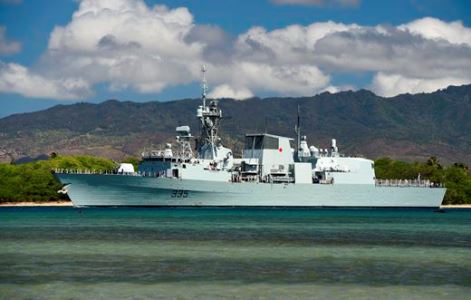Lockheed Martin Canada announced that its combat systems design for the Royal Canadian Navy’s Halifax Class Modernization (HCM) project has received first article acceptance.
Lockheed has been working with the navy in producing the combat system computing environment (CSCE) for 12 ship installations, one land-based test facility and trainers for the. Department of National Defence. The HCM project is a $4.3 billion initiative to upgrade and extend the service life of the 12 Halifax-class frigates of the RCN which were commissioned between 1992 and 1996. The project is scheduled for completion in 2018.

“First Article Acceptance confirms that Lockheed Martin Canada’s combat system design meets the navy’s performance requirements,” the company said in a statement yesterday. The company said it has worked closely with the RCN of the HCM project throughout the requirement, sub-system selection, design, and implementation phases.
The HCM Combat Systems Integrator modernization program was awarded to Lockheed in late 2008. The contract includes a mid-life upgrade of radars, major critical sensors, command and control systems, operations room, and a suite of simulation/training systems. The contract scope also included the redesign of ship compartments and all shipyard work to refit the ship platform.
RELATED CONTENT
Lockheed Martin marks 100th Halifax-class cabinet
Halifax-class modernization finds its first buyer
The Halifax-class vessels form the backbone of the RCN. The ships were originally designed for anti-submarine warfare and anti-surface warfare, primarily in the open sea. However, according to the RCN, the role of the Halifax-class has changed.
“Current and evolving maritime threats are faster, stealthier, more maneuverable, and shifting from the open ocean to the littoral (near-shore) environment,” the navy said. “…In addition, ships now face asymmetrical threats, such as attacks from smaller, more maneuverable vessels that were not envisaged at the time of the ships’ design.”
“Our innovative combat management system, integration methodology, and Canadian supply chain form the largest component of the modernization project,” said Rosemary Chapdelaine, vice president of mission systems and training at Lockheed Martin Canada.
The first four frigates to be modernized as part of the HCM were Her Majesty’s Canadian Ships Halifax, Fredericton, Calgary, and Winnipeg. Work on the vessels was completed on 2014.
“The overall management and success of the program has proven to be an excellent partnership for future shipbuilding projects and has been recognized internationally,” according to Vice-Admiral Mark Norman, commander of the RCN.
Norman said, “valuable information” provided to New Zealand’s Ministry of Defence on the RCN’s modernization experiences has helped the ministry decide to upgrade the combat systems of New Zealand’s ANZAC class vessels.
“This global export opportunity of the Canadian combat system is the result of close collaboration between the Royal Canadian Navy, Department of National Defence and industry,” Norman said.
Lockheed Martin Canada and Seapan’s Victoria Shipyards are expected to install and integrate a new combat system into New Zealand’s two MEKO-class frigates beginning in 2016. The new system will include Rheinmetall’s Multi Ammunition Softkill System (MASS). The New Zealand Ministry of Defence issued a €4.2 million contract to equip the frigates with MASS as part of its ANZAC modernization program.